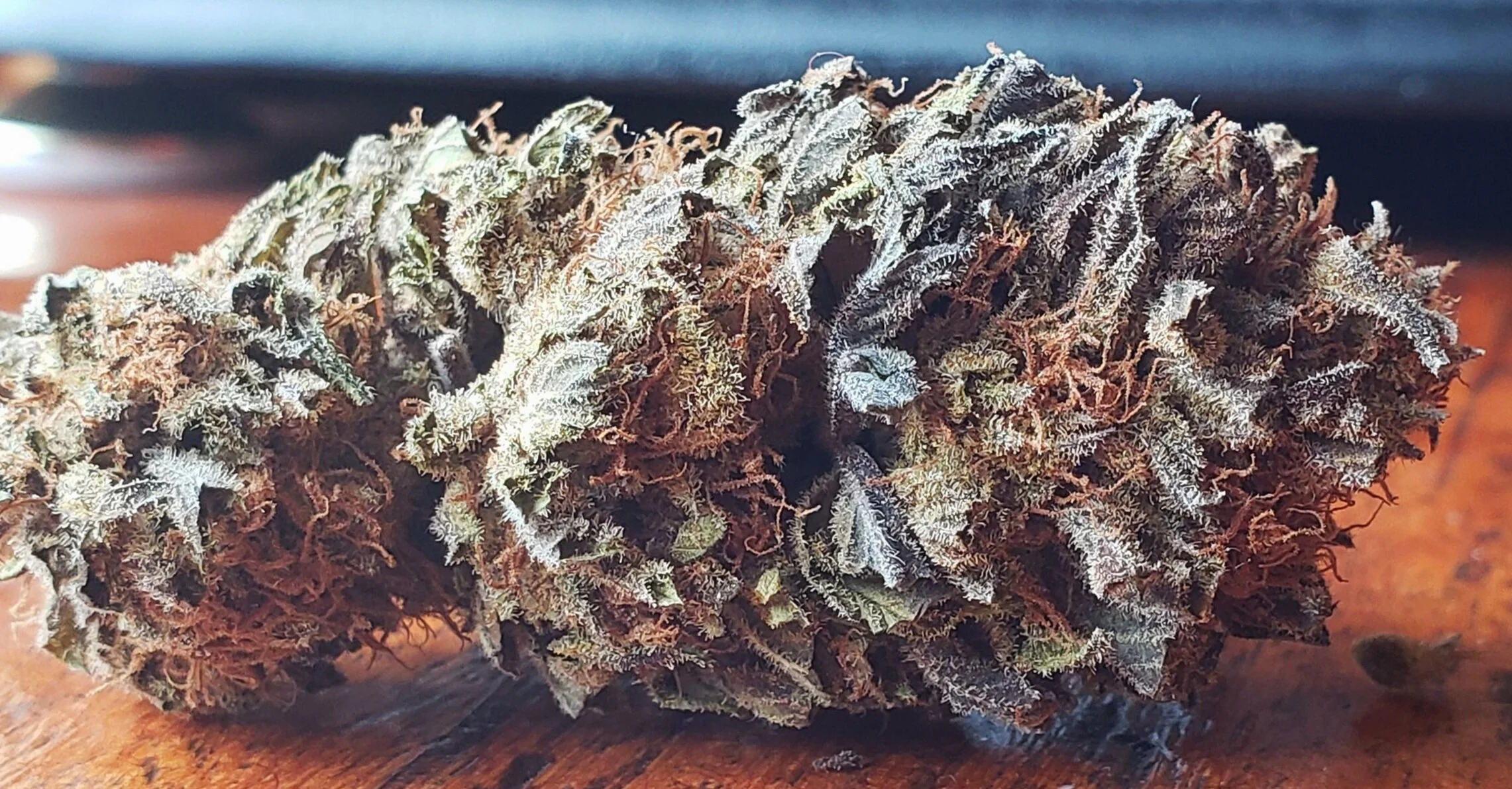Origins and Backstory: I purchased these seeds at the Emerald Cup—they are @meangenefrommendocino’s cross of the famous Ghost OG Kush and Mean Gene’s Limepop 5—this hybrid was then bred to the F3 generation. I selected a single male from the pack to use for pollenations, based on stem rub aroma and vigor. Five female phenotypes were grown out and pollenated to make the F4 generation. I grew these indoors organically in soil. They were all uniform, so this review equally applies to the whole gang.
Appearance: Like a typical OG, The Limepop Kush grows lime green pyramid-sloped buds with heavy tops. I didn’t realize how OG heavy the genes on this cross were until late into flowering, when the plants started to look (and smell) like OG Kush. The finished flowers are pinecone shaped fingerling buds, with the terminal calyxes stacking to appear almost like little crowns. This really looks every part of a classic OG plant, and finished flowers are no different.
Aroma: The Limepop really comes through in the aroma and flavor, a match made in heaven for an already funky/citrusy plant like Ghost OG. While the plants predominantly smelled of Lime rind, turpentine, and classic OG, notes among phenotypes ranged through candied ginger, lime freezer pops, 7Up, rubber, tarmac, Pledge/Pinesol, perfume, lemon warhead candies, and gasoline. The most dominant aromas are lime, lemon, ginger, and various chemical solvents—it is really a bizarre combination of pleasant citrusy aromas and harsh janitorial scents. There is definitely a “pop” or “Soda” element to the aroma as well; the smell is not like cracking open a lime, but makes me think of drinking a lime-flavored soft drink. The union of these seemingly-unrelated scent profiles is really lovely, and it is rare that I can say someone has done something different, unique, and interesting with an OG. However, this is one of those rare occasions! The bouquet is typical of an OG, but is unique enough to inspire intrigue. The unique aroma, which I have not experienced in cannabis, differentiates itself from other clone-only OGs as well as any I have seen in seed form.
Flavor: The bouquet translates well to flavor on Limpeop Kush, yielding a deeply citrusy, janitorial/chemical flavor that hits on many subtleties and complexities. It encourages one to repeatedly taste one’s own palate, smack lips and tongue, and really just to savor the experience. The citrus comes through strongly as does the ginger. One pheno in particular tasted of ginger snaps with artificial lime flavoring, while another leaned heavily toward lemon pledge and turpentine. There is an element of bitterness and funk as well, which pushes the bright lemon aromas into more of a bitter lemon/lime rind flavor. The flavor is less sweet than the smell, but certainly more funky, which I welcome with open arms (and mouth). Another phenotype was reminiscent of Pure Kush, with a velvety softness not far from marshmallow and vanilla—flavors I have experienced in Hollywood Pure Kush as well as Lucky Charms. The flavor is just as enjoyable as the smell, and just as novel. It is incredibly rare to experience such a well-composed collection of flavors all in a single plant, and it is flavors like this one that remind me why Freeborn Selections is considered a top-tier seed company.
Effects: Limepop Kush has a quickly-setting stone, and characteristics like instant-nose-crinkling, forehead sweating, and a head rush that can be somewhat similar to tobacco. The effects are classically OG for the first couple minutes. The high starts to differentiate itself as time goes on, and LPK is reliably uplifting, euphoric, and happy. While some plants are more relaxing or mellow, LPK consistently gives me a happy effect that inspires smiles, a feel-good attitude, and strong sense of well being and optimism. The feeling isn’t incredibly long-lived, as it settles back into a more relaxed, numbing, silly-dumb kind of high after an hour or two of looking at the glass as half-full. The effect does settle down into a high I typically associate with indicas, so this can be a tricky one for day smoking. Morning smoke is great on this one, but the comedown is on the heavy side and can interfere with plans later on.
Overall: Limepop Kush is one of the more unique strains to make it in my garden recently. She really shines in her structure, aroma, and flavor, which are all exceptional. Not only are these aspects of LPK incredibly desirable, but the aroma and flavor really cannot be found elsewhere in my experience. I’ve smelled some plants that were mildly similar, but the overlap is only slight, and LPK really has her own thing going on. Her delightfully-effervescent lime flavor (layered with all the chemical aromas is really something else) kept me coming back for more, and I depleted jars of LPK much faster than Pillow Book (I harvested these at the same time, and so I constantly had to make a choice between which of the two I wanted to smoke). I did make the mistake, many times over, of smoking LPK in the morning. The optimistic euphoria is really an incredible way to start your day, but the foggy comedown was less than ideal for me. This is a really great strain for commercial cultivators and the home-growing connoisseur alike. I would especially recommend this to fans of OG looking for fresh terpene profiles.



